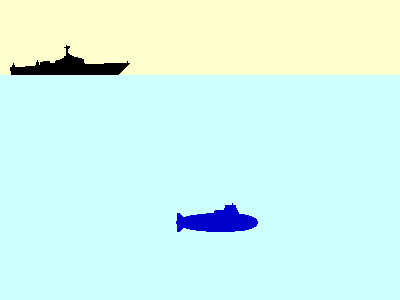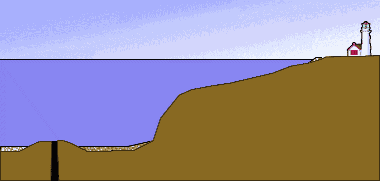
Sonar (SOund Navigation And Ranging) is the generic name of the technology that is used to locate objects underwater. Sonar systems are of two basic types - active and passive. In active sonar, the system emits a pulse of sound and then the operator listens for echoes. In passive sonar, the operator listens to sounds emitted by the object one is trying to locate.
Active Sonar
When a sound signal is sent into the water, part of it will be reflected back if it strikes an object or "target". The distance to the object can be calculated by measuring the time between when the signal is sent out and when the reflected sound, or echo, is received. For example, if four seconds elapse between the emission of the outgoing sound and the return of its echo, the sound has taken two seconds to travel to the object and two seconds to return. The average speed of sound in the water is 1,500 meters per second. So if it takes two seconds for sound to reach the object, we can assume the object is 2 sec x 1,500 m/sec or 3,000 meters away.
